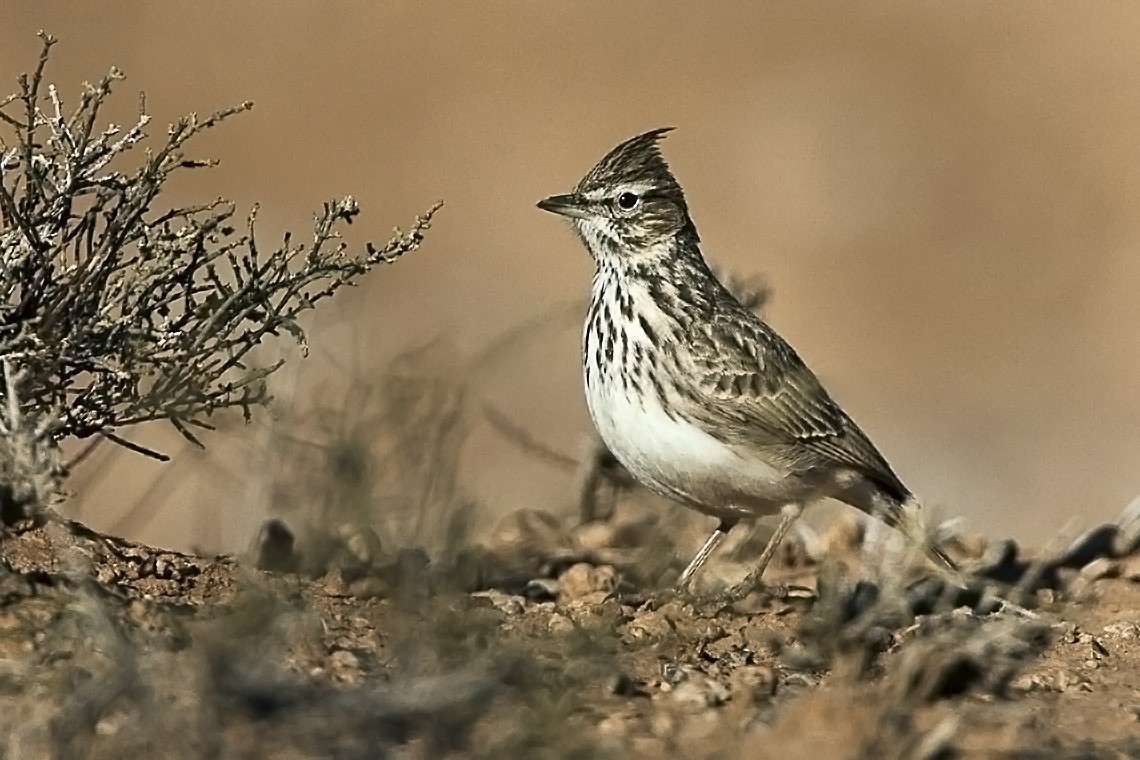Thekla's Lark
A species of Large-billed Lark and Crested Lark Scientific name : Galerida theklae Genus : Large-billed Lark and Crested Lark
Thekla's Lark, A species of Large-billed Lark and Crested Lark
Botanical name: Galerida theklae
Genus: Large-billed Lark and Crested Lark
Content
Description General Info
 Photo By Francesco Veronesi , used under CC-BY-SA-2.0 /Cropped and compressed from original
Photo By Francesco Veronesi , used under CC-BY-SA-2.0 /Cropped and compressed from original Description
This is a smallish lark, slightly smaller than the Eurasian skylark. It has a long, spiky, erectile crest. It is greyer than the Eurasian skylark, and lacks the white wing and tail edge of that species. It is very similar to the widespread crested lark. It is smaller and somewhat greyer than that species, and has a shorter bill. In flight it shows grey underwings, whereas the crested lark has reddish underwings. The body is mainly dark-streaked grey above and whitish below. The sexes are similar. 
Size
17 cm
Nest Placement
Ground
Feeding Habits
Thekla's Lark's diet adapts seasonally, consisting primarily of insects and seeds, with some green plant material. Nestlings are exclusively insectivorous. Thekla's Lark forages solo or in groups, employing ground-based search tactics and uniquely breaking open snail shells by smashing them.
Habitat
Thekla's Lark tends to inhabit areas characterized by rough terrain with a mix of shrublands and open spaces. These birds thrive in semi-arid grasslands, shrub-steppes, and scrubland where there is a substantial presence of bare ground. They are also found in agricultural landscapes such as olive and almond orchards and vineyards, steering clear of cereal crops. In terms of elevation, thekla's Lark is predominantly found at altitudes below 1000 meters but can occur up to 3200 meters in some southern parts of its range.
Dite type
Granivorous
General Info
Feeding Habits
Bird food type
Sounds
Call
Recording location: Ethiopia
Call
Recording location: Portugal
Song
Recording location: Portugal
Song
Recording location: Portugal
Behavior
It nests on the ground, laying two to six eggs. Its food is weed, seeds and insects, the latter especially in the breeding season. The song is melodious and varied, with mournful whistles and mimicry included. It is softer and more tuneful than that of the crested lark, and may be sung during flight or from the ground or an exposed perch. 
Distribution Area
Thekla's lark is native and resident in France, Spain, Portugal, Algeria, Egypt, Eritrea, Ethiopia, Kenya, Libya, Morocco, Somalia, Tunisia and Western Sahara. Its typical habitat is rugged areas with scrub, bare patches of ground and semi-arid grassland. 
Species Status
Not globally threatened.